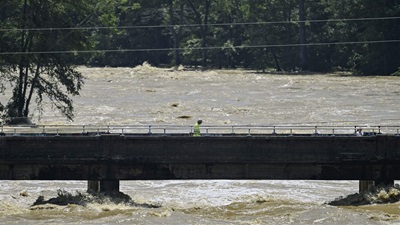New Paper Examines How States Measure Disaster Resilience
Research compares approaches in Washington and South Carolina

Communities throughout the U.S. face more frequent and extreme weather threats than in previous decades, with growing economic and societal impacts. So states are investing in planning for, and building resilience to, uncertain and damaging events. Measuring if these investments are successfully enhancing resilience improves the accountability and efficacy of state resilience programs.
The Pew Charitable Trusts convened officials from 15 states and six federal agencies, along with representatives from nonprofits and academia, at a 2024 State Resilience Planning Group meeting to discuss approaches to measuring resilience. State officials exchanged information about how state offices track resilience progress, measure risk reduction and benefits, and showcase their successes. Following the meeting, Kristiane Huber of Pew, Margot Habets of the University of South Carolina, and Carlie Stowe and Crystal L. Raymond of the University of Washington co-authored a paper, "State Strategies for Measuring Resilience: A Comparative Study of South Carolina and Washington’s Approaches."
The paper focuses on the two states’ contrasting approaches to developing resilience measurement frameworks and highlights lessons learned from the states’ experiences. Although each state has a unique framework, the two navigated similar challenges and considerations, and their experiences provide practical guidance for other states on future efforts to build more resilient communities.













